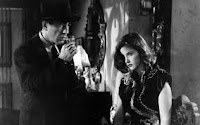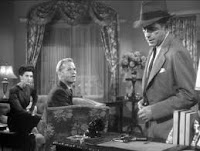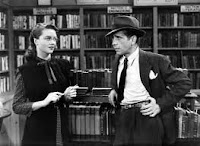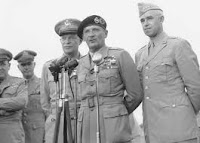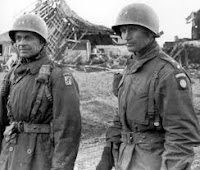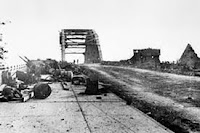 It may seem odd that I waited until after football season to tackle two books about the sport, but that may have something to do with my desire to find some uses for my Christmas Kindle besides downloading 19th century books I ought to have read but never did and probably won't in the near future but can feel virtuous about because I carry them around with me while I travel.
It may seem odd that I waited until after football season to tackle two books about the sport, but that may have something to do with my desire to find some uses for my Christmas Kindle besides downloading 19th century books I ought to have read but never did and probably won't in the near future but can feel virtuous about because I carry them around with me while I travel.It may also seem like I jinked Ron Jaworski, who, just after I finished his book (but before I reviewed it) was dumped as the analyst on ESPN's Monday Night Football, in favour of leaving a two-man booth with Mike Tirico and Jon Gruden. While Jaws and Chucky were never really a comfortable match, clearly the latter's youth and edginess appealed more to ESPN's execs than Jaws' more analytic film study and rust-belt survivor image. I'd put Jaws up near the top of colour men, and in truth he's probably better suited to the breakdown shows, where he has time to study, than to the immediacy of the MNF broadcast (not to mention the relentless youth-oriented-attention-span-of-a-fruit-fly-on-speed approach of ESPN). He runs rings around Gruden in terms of analysing what is going on during a game, but Gruden's got the buzz
 of the fruit fly down pat.
of the fruit fly down pat.Having said that, I was a little disappointed in this book, mostly because the title is somewhat misleading. The games he chooses are not necessarily those that triggered various steps of gridiron evolution, but in most cases simply those that provide good illustrations of the strategies he wants to highlight. And I wonder too whether in most cases these are actual catalysts for evolution, or might be better described as stages of that evolution. For example, the third stage is Don Coryell's 'roving Y', a tactic which itself evolved from the remarkable versatility of tight end Kellen Winslow. But the overall picture of Air Coryell itself evolved from Sid Gillman's Vertical Stretch (Jaws' first Sunday) and so did Bill Walsh's West Coast offense (Walsh in effect turned Gillman's vertical concepts horizontal—where Al Davis, for example, preferred to stick with the vertical). My point is simply that you shouldn't expect a moment that 'changed' the NFL, such changes are gradual, and not every team or every coach buys into them. He's very good on Gillman and Coryell, as you'd expect, but just as good on Buddy Ryan's and Dick LeBeau's defenses. I might have liked to see him going back a bit further--Gillman for example, was influenced heavily by Clark Shaugnessy's early-50s Rams, while the 3-4 defense had some of its origins in Gillman's defensive coordinator, one Chuck Noll, using a 4-3 tackle (Ernie Ladd) over the center, which was followed by Hank Stram's Chiefs, and then Joe Collier's defenses in Denver. The innovations in the AFL weren't all offensive.
Trying to mix history and tactics makes a tough dilemma for Jaws, because publishers need more of a hook to sell the book than simply the history he provides, or the analysis of systems and what makes them work which is fascinating. What is obvious, too, is the way personnel influences planning (it's no coincidence that Buddy Ryan's 46 defense, which is included here, like Bill Arnsbarger's 53, drew their names from the jersey number of a player key to their construction). But even beyond that, think of the ways Ryan used the exceptional personnel he had—good man cover corners, hard hitting safeties, a flexible D lineman and a top-flight pass rusher, a brilliant MLB etc—to make his defense better. There's an interesting essay to be written there about the way personnel can influence a system, and then the way the system influences the personnel. Success lies in the median between those ideas, which boil down to putting players in a position to make plays; not asking them to do what they can't do, and then getting players who can do what the system wants them to do.
Even Jaws' most obvious single-game (as opposed to a game illustrating an ongoing system) example, Bill Belichick's 'Bulls-Eye' (Jaws' term) game plan, designed to stop the Rams' Marshall Faulk in the Super Bowl, is not something every coach will try. Belichick (absent a game-changer like Lawrence Taylor, and even with him) seems to believe in taking away the opponent's most dangerous weapon (see the last Super Bowl against the Giants, where the Pats neutralised Victor Cruz) and force teams to beat you with their own Plan B. So it's hard to say that this game changed the NFL, not nearly as much as shocked it. It certainly didn't seem to change the way the NFL does business and, as we have seen, although it prompted a run on Belichick coaches, execs, and to a lesser degree players, few of them have achieved enough success to have any effect on the way the league operates.
 In fact, you can see a lot of that in Michael Holley's War Room, the title of which is also somewhat misleading, though its subtitle states exactly what the book is really about. It's not about a 'war room', which we think of as being where NFL drafts are engineered, as about the way Belichick built his Patriots' front office staff, and the way those people eventually moved on. I was already aware of how many of the people in the Pats' coaching tree were, like Belichick, at least second-generation football men, sons of coaches, who grew with the game in their vocabulary and their blood. But as Holley portrays various Pats and ex-Pats, in particular Scott Pioli and Thomas Dimitroff from Belichick's front-office, the more you see the sort of dedication and obsession that is needed to succeed--something which growing up in the game, as opposed to playing it, might help, but something which isn't confined to . It's somewhere between a corporation and the military, and it's also no coincidence that, like the NFL itself, military analogies are used constantly, military examples are held up as goals, and the military life is celebrated. You need a similar sort of hierarchical control, a pecking order, a firm leader to run an NFL team, as much as you need the sort of unthinking, reflex obedience to a plan and to orders to succeed on the field. Questioning authority becomes a difficult task, and no one ever stops to examine the military's inbuilt conservatism, its tendancy toward self-perpetuating bloat and congratulation.
In fact, you can see a lot of that in Michael Holley's War Room, the title of which is also somewhat misleading, though its subtitle states exactly what the book is really about. It's not about a 'war room', which we think of as being where NFL drafts are engineered, as about the way Belichick built his Patriots' front office staff, and the way those people eventually moved on. I was already aware of how many of the people in the Pats' coaching tree were, like Belichick, at least second-generation football men, sons of coaches, who grew with the game in their vocabulary and their blood. But as Holley portrays various Pats and ex-Pats, in particular Scott Pioli and Thomas Dimitroff from Belichick's front-office, the more you see the sort of dedication and obsession that is needed to succeed--something which growing up in the game, as opposed to playing it, might help, but something which isn't confined to . It's somewhere between a corporation and the military, and it's also no coincidence that, like the NFL itself, military analogies are used constantly, military examples are held up as goals, and the military life is celebrated. You need a similar sort of hierarchical control, a pecking order, a firm leader to run an NFL team, as much as you need the sort of unthinking, reflex obedience to a plan and to orders to succeed on the field. Questioning authority becomes a difficult task, and no one ever stops to examine the military's inbuilt conservatism, its tendancy toward self-perpetuating bloat and congratulation.I am extending the metaphor here, because Holley never suggests that that is the way the Patriots functioned, and I would never suggest that Belichick actually operates in such an exaggerated way—there's no one in football more open to new ideas, and Holley also makes it clear that he's easier to question, within certain limits, than, say, his mentor Bill Parcells.
But those coming to this book to try to find out why Belichick chose Lawrence Maroney and Chad Jackson in the draft will be interested to learn that he basically overruled the opinions of most, if not all, of his personnel staff, but will never find out why.
 And those wondering why the Pats passed on Clay Matthews will hear nary a word.
And those wondering why the Pats passed on Clay Matthews will hear nary a word.What you will get is a look into the Scott Pioli now accused of micro-managing the Chiefs front-office and indulging paranoia to the the extent employees are not allowed to watch team practices through their office windows. And into the Tom Dimitroff who rides a bicycle and eats tofu while following in his father's more traditional football footsteps. The why of this is something Holley leaves alone, but the portrait is fascinating. Along the way, looks at Eric Mangini, Josh McDaniels, Brian Daboll, even Romeo Crennell and Charlie Weis, are interesting but never really revealing.
But of course, in the end, the Patriots' war room boils down to the mind of Bill Belichick, and our curiosity about the real Belichick remains unsatisfied. Holley goes a long way into showing us the kind of systems Belichick has constructed, the way he has groomed his support and their successors. It reminds me more of Paul Brown than many of the great coaches of the modern era, and as with Paul Brown, the system is successful to an extent. The challenge is moving forward and passing that extent, creating a new one. Whether Belichick has already done that, or whether, like Brown, he is facing that challenge after a great ten-year run. Holley's book doesn't really suggest what the answer might be. It is interesting, but in the end might tell you more about Dimitroff's Falcons or Pioli's Chiefs than the Pats.
The Games That Changed The Game: The Evolution of the NFL in Seven Sundays by Ron Jaworski, David Plaut, and Greg Cosell (ESPN Books, $26.00, ISBN 9780345517951)
The War Room: The Legacy of Bill Belichick & the Art of Making the Perfect Team by Michael Holley (Harper, $25.99, ISBN 9780063088871)




